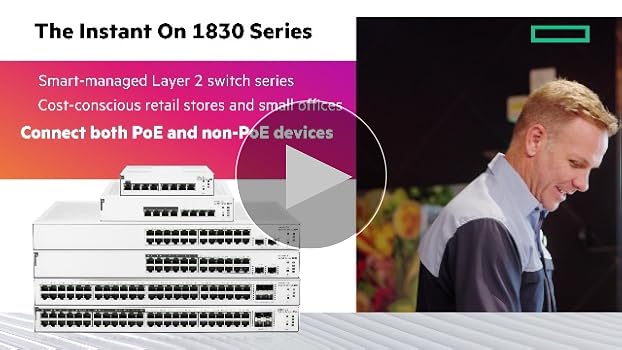HPE Aruba Instant On 1930 Series

The first whiff of burnt electronics always gets my attention. Found it, in the server room of a brand-new co-working space. Turns out, a cheap unmanaged switch had finally given up the ghost. The owner, bless his heart, was panicked. “Everything’s down!” he wailed, as if the internet itself had ceased to exist. Enter the HPE Aruba Instant On 1930 Series.
My initial assessment of the damage involved more than just a visual inspection. We’re talking about an eight-port PoE model, and power over ethernet is a beautiful thing – until it’s fried. Luckily, nothing else was permanently damaged. This co-working space, with its mix of IP phones, security cameras, and the endless stream of laptops, was screaming for a smart-managed switch. Something robust, something with decent Layer 2+ features. The Instant On 1930 seemed tailor-made.
The setup itself was surprisingly painless. Aruba’s cloud-based portal and mobile app – both of which I initially eyed with suspicion – actually made the process a breeze. We’re talking about a configuration that would’ve taken hours on older, more cumbersome systems, now done in minutes. That’s the beauty of the “smart-managed” aspect; you get control without the crippling complexity. The web GUI is intuitive, and the switch allows for VLAN configuration, which is critical in any shared office environment. You don’t want users accidentally stumbling into the security camera feed, am I right?
The 124W PoE budget on this particular model is generous, enough for all the access points and VoIP phones, with headroom to spare. And, the two SFP ports? Excellent. Fiber connectivity is a godsend for any network that needs to span a distance, offering far greater bandwidth than standard copper. I’d strongly recommend getting the right transceivers upfront to save yourself a headache later.
Now, a minor quibble: the lack of a built-in CLI, which is a common complaint among hardcore network engineers. I, for one, am old-school; I like the hands-on control, the command line interface. But, realistically, for this type of user – the small to medium-sized business owner – the GUI-centric approach is a win. There are some limited troubleshooting options available via the app, so it’s not a complete deal-breaker.
Comparing it to the previous generation, the Aruba 1920S, the 1930 is a significant leap forward in terms of both ease of use and features. More importantly, it felt considerably more stable in operation. And that, ultimately, is what matters. Reliability is king.
So, who is this switch for? The small business owner, the co-working space manager, the growing startup that needs rock-solid connectivity without the crippling cost of a fully managed, enterprise-grade solution. Buy it, configure it, and forget about it. Seriously. You’ll thank me later.